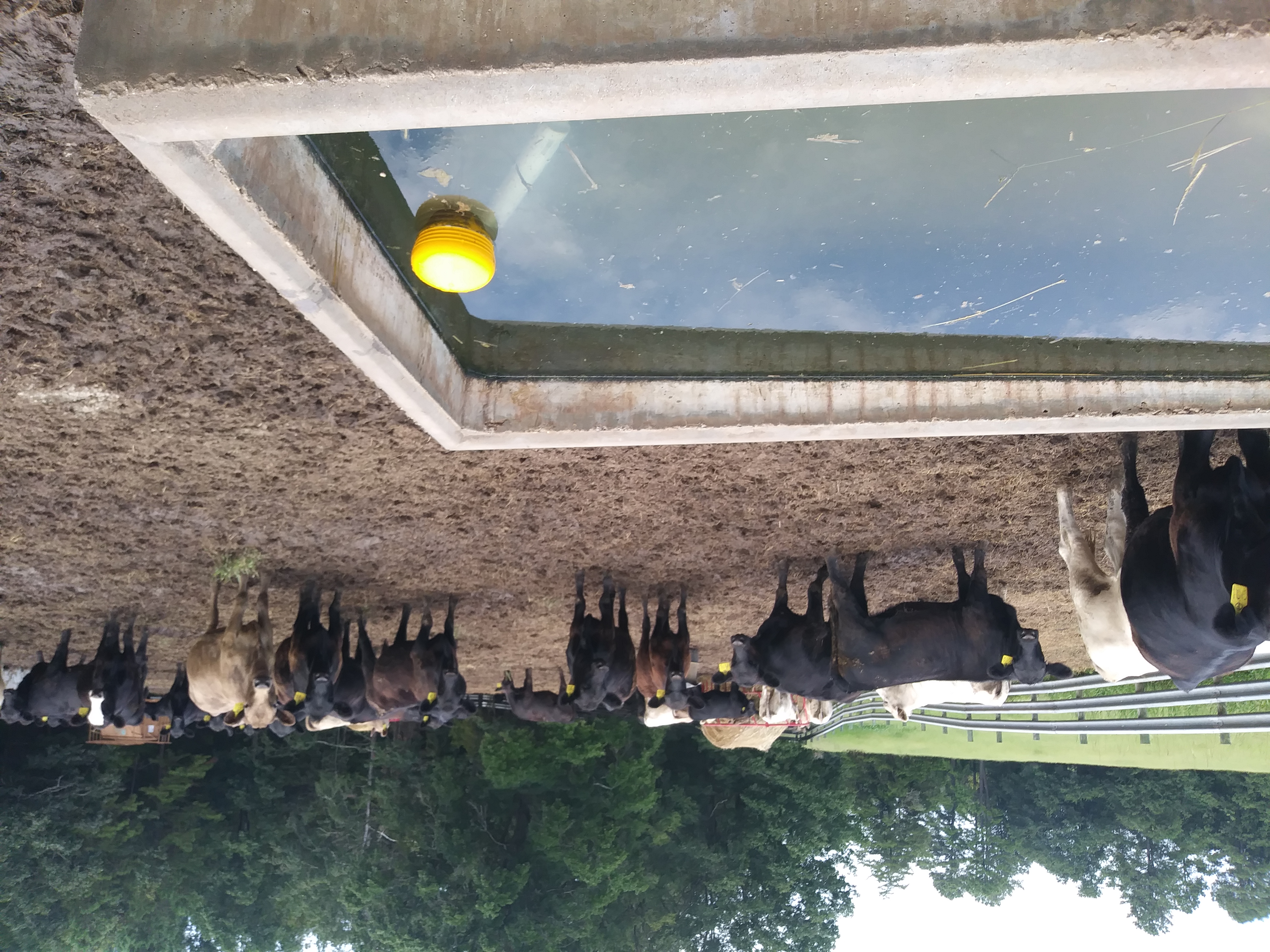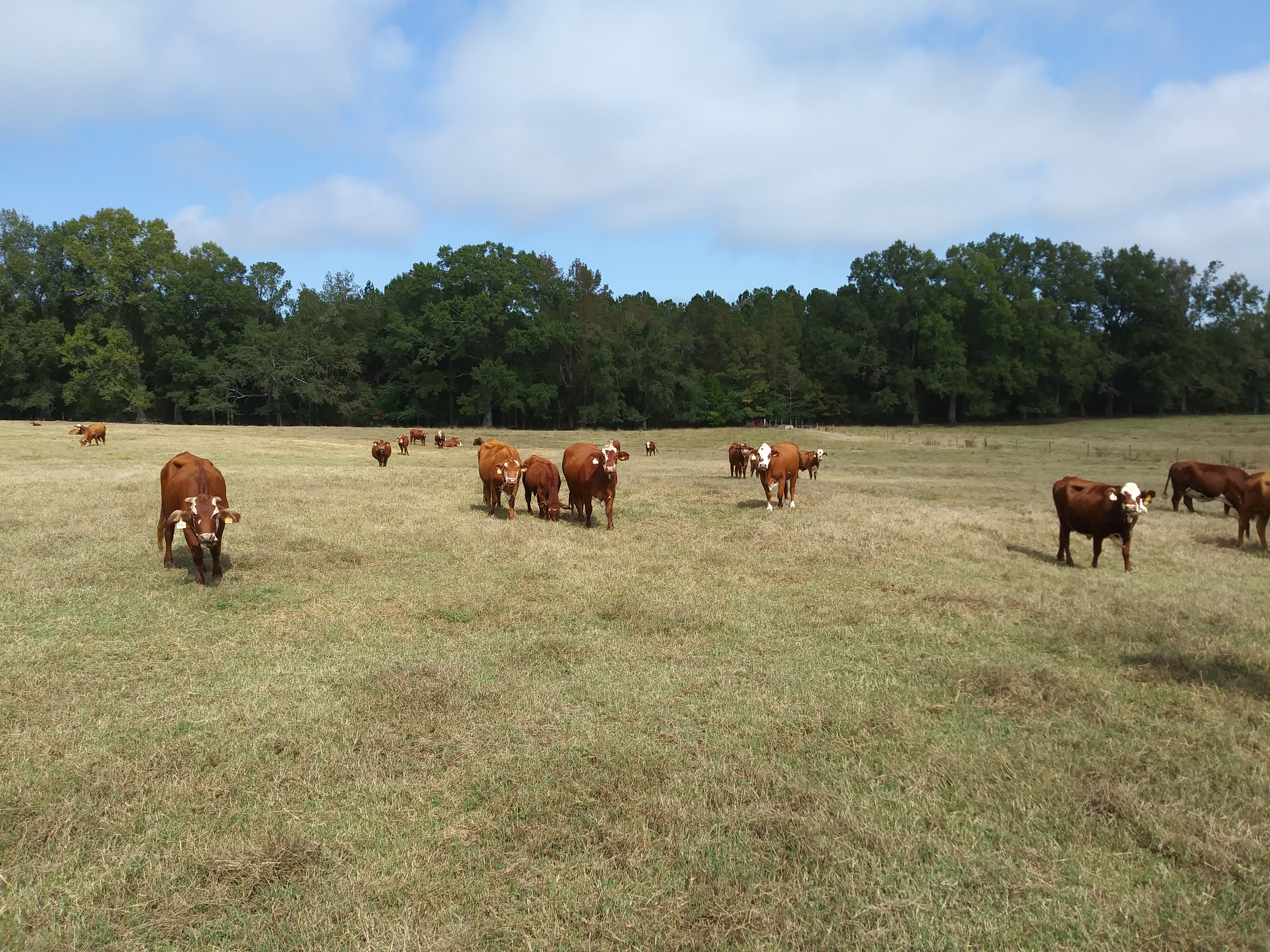- Wunderly, Martin
Summary
Livestock production relies on good quality water sources for animal health and adequate consumption. Contaminated water can lead to decreased water intake and health issues affecting reproduction and growth. To inspire farmers to consider the water quality they provide to livestock, a water sampling effort was conducted in northeast Georgia to test for parameters known to cause health issues. Different water sources were tested to look for differences in quality. Participating farms received free water tests and consultations on water supply improvements for delivering clean safe drinking water. The farms are now able to improve upon and maintain healthier livestock production in Georgia.
Situation
Water quality is important to animal health and farm profit. Decreased water intake and health issues due to water contamination and inadequate supply can adversely affect animal health, reproduction and growth. In Georgia, cattle and other livestock are provided drinking water from various sources with different methods. These include streams, ponds, well water and a variety of trough systems that are not maintained equally. Water quality varies widely for each source and delivery method, affecting total water consumption and animal health. Examples of water contaminants that might impact livestock production include suspended solids, metals, salts, and bacteria. Some elements, such as sulfate, manganese, iron, and fluoride, can affect taste and water intake. Even extreme water temperatures can reduce consumption, leading to health concerns. Also, during hot summer months harmful algae and bacteria can flourish in farm pond drinking water sources. Research indicates that livestock, when provided with high quality water, will drink more, eat more and ultimately gain weight more quickly. Research also shows that improved water quality can lead to a decrease in disease and other health problems in animals. Such improvements in cattle health will lead to more efficient growth and better value for beef production.
Response
A survey of livestock drinking water quality was conducted in northeast Georgia by sampling farms in 11 counties with the assistance of Agriculture and Natural Resource Extension Agents in Franklin, Stephens, Habersham, Oglethorpe, Jackson, Walton, Oconee, Madison, Morgan, Warren, and Lincoln counties. Thirty-two different farms participated in the project and 50 different livestock watering sources were sampled. These included a variety of well water troughs, ponds, and streams. All samples were analyzed for iron, manganese, sulfate, molybdenum, chromium, calcium, copper, sodium, fluoride, chloride, phosphate, soluble salts, total dissolved solids, turbidity, nitrate and nitrite, pH, and fecal coliform bacteria. Ten of the samples were also analyzed for arsenic, selenium, cadmium, and lead. In 30 of the watering sources water temperature data loggers were deployed during August, September and October. Water temperature was recorded every 15 minutes for 24 hours a day to monitor for optimal drinking water conditions. Water test results were shared with the participating farms. Based on the drinking water quality parameters acceptable for livestock health, consultation was provided to farmers where tests showed undesirable conditions. Suggestions for techniques to improve their drinking water resources for livestock were also provided.
Impact
The farms that participated in the survey received free water quality reports on their livestock drinking water sources. They can use the results to determine the best water management actions to provide the safest water possible for livestock on their farm. Farms that have water quality issues higher than the recommended limit will receive custom consultation about water maintenance and improvement. Using the highest quality water available and most optimal delivery method will contribute to improved production of livestock by preventing negative health effects and ensuring sufficient water consumption. This effort will improve livestock production in Georgia. Research has shown that cattle can gain an additional 10% of their weight over 90 days with access to higher quality water, leading to higher consumption and less health problems. Such an increase could contribute an additional 49 million dollars to the value of beef produced in Georgia. The farms that participate in this project will be surveyed next year about any improvements made to livestock drinking water quality and whether they notice differences in livestock performance and health.
State Issue
Animal Production
Details
- Year: 2020
- Geographic Scope: District/Department
- County: Oconee
- Location: College Station, Athens
-
Program Areas:
- Agriculture & Natural Resources
Author
Collaborator(s)
CAES Collaborator(s)
- Burnsed, Joel
- Cheely, Tammy W.
- Fitzpatrick, Raymond Garland
- Glenn, Thad
- Hawkins, Gary L.
- Knight, Carole Hicks
- Patrick, Steven R.
- Pittman, Gregory
- Ray, Lucy
- Reynolds, Shanna
- Stephens, C. Monte
- Stewart, Lawton
- Stewart, Robyn Leigh
Extension Impact


